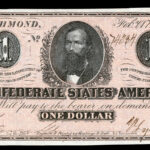The saying “Put Your Money Where Your Mouth Is” is a common idiom in the English language, urging individuals to support their words with concrete actions, particularly financial commitments. But where did this compelling phrase originate? While popular belief often attributes its emergence to the mid-20th century, delving into historical texts reveals a richer and more nuanced history.
Early Attributions and Definitions
Dictionaries of clichés and slang have long attempted to pinpoint the phrase’s beginnings. Christine Ammer’s The Facts on File Dictionary of Clichés suggests a U.S. origin around 1930, noting its spread to Great Britain post-World War II. Interestingly, she mentions the British government’s use of the idiom in a 1975 advertising campaign to encourage savings in National Savings Bank Accounts.
Eric Partridge, in A Dictionary of Slang and Unconventional English, initially placed the phrase’s emergence around 1945, linking it to the American expression “put up or shut up.” This association highlights the inherent challenge implied in “put your money where your mouth is”—a call to action that demands tangible proof of one’s convictions.
Unearthing Pre-1930 Examples
Contrary to these established timelines, a search through digitized books reveals instances of “put your money where your mouth is” appearing even earlier than the 1930s. Howard Washington Odum’s 1928 work, Rainbow Round My Shoulder: The Blue Trail of Black Ulysses, vividly captures the phrase in dialogue, showcasing its use in a gambling scenario:
“Put your money where your mouth is.”
“It is down, turn them dam’ cards you have fell.”
This literary example places the idiom firmly in the vernacular of the late 1920s, suggesting a wider circulation than previously acknowledged by lexicographers.
Further investigation into archival texts like Trans-communicator, a periodical, uncovers the phrase used in a professional context as early as 1928 and 1929. In these instances, it’s employed to encourage action and commitment within a work environment, urging individuals to back up their aspirations for better conditions with tangible effort and contribution:
Such persons should be told to put their money where their mouths are and they will get results.
…to “put our money where our mouth is—and “pay up.”
These examples demonstrate the phrase’s versatility, extending beyond informal settings like gambling and into more formal, professional discourse, still within the late 1920s.
Precursors and Related Phrases
The notion of linking financial commitment to verbal claims wasn’t entirely novel. Earlier phrases with similar structures and meanings existed, hinting at a gradual evolution towards “put your money where your mouth is.” Examples include:
- “put their money where their faith is” (1881) – emphasizing financial support for religious beliefs.
- “put your money where your interests are” (1905) – advocating investment in alignment with personal interests.
- “put your money where your heart is” (1915, 1919) – suggesting charitable giving or investing in causes one cares about.
These phrases, while not identical, share the core concept of financial action validating stated beliefs or desires, paving the way for the more direct and confrontational tone of “put your money where your mouth is.”
A 1913 Senate Exchange: The Earliest Newspaper Evidence
Recent research has pushed the documented origin of the phrase back even further. Newspaper archives reveal the idiom in use as early as August 1913, during a heated exchange between Senator Reed Smoot of Utah and Senator Morris Sheppard of Texas on the floor of the U.S. Senate. A report in the Houston Post on August 24, 1913, details the dispute:
“Put your money where your mouth is,” retorted Senator Sheppard.
This instance, used in a high-stakes political debate, not only predates the previously cited origins by decades but also underscores the phrase’s inherent confrontational and challenging nature. The newspaper article even clarifies the idiom’s meaning for the “layman,” equating it to the more direct “put up or shut up,” further cementing its aggressive connotation.
An Inverted Phrase in 1914
Interestingly, a slightly altered version, “Put your mouth where your money is,” surfaces in a Denver Star article from April 1914. Describing a lively scene at a boxing match, the article uses the inverted phrase amidst betting and challenges:
“…such expressions as “Put your mouth where your money is,”…”
While inverted, this example further solidifies the presence of the core concept – aligning speech with financial stakes – in the early 20th century American lexicon.
Conclusion
The journey to uncover the origin of “put your money where your mouth is” reveals a fascinating evolution of language. While dictionaries initially placed its emergence in the 1930s or 1940s, historical texts and newspaper archives demonstrate usage extending back to at least 1913, and potentially even earlier through related phrases. From gambling scenarios to political debates and professional contexts, the idiom has consistently served as a powerful call for authenticity and commitment, urging individuals to back up their words with tangible action. This exploration highlights the dynamic nature of language and the ongoing process of uncovering the rich histories behind even the most common phrases we use today.

